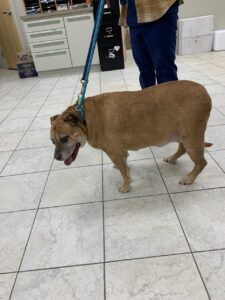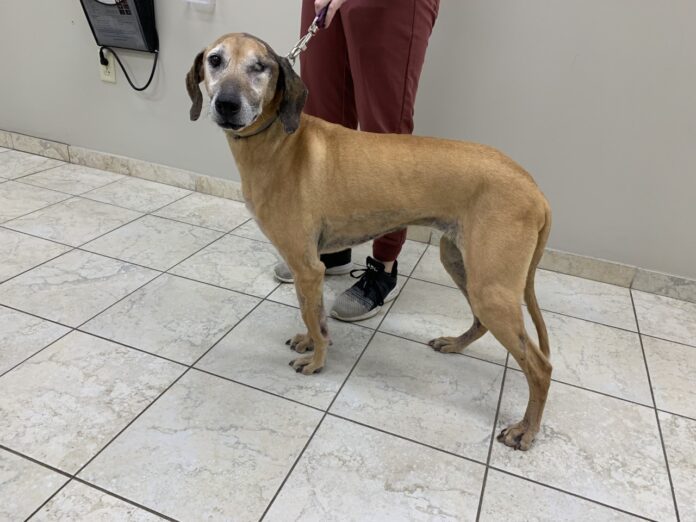Overweight dogs suffer needlessly. They show symptoms like lethargy, difficulty rising, lameness, heavy breathing, exercise intolerance, and disinterest in playing. If the dogs were not overweight, it’s unlikely these things would plague them. And it’s all our fault: The brutal truth is that domestic dogs rarely eat anything we don’t give them.
A simple way to tell if your dog is overweight is to feel for his ribs. As easy as it would be to have a chart for overweight dogs, like the human bone mass index (BMI) weight chart doctors use, we’re just not there yet. There are too many variables, and you can’t just go by numbers. One Labrador Retriever who weighs 60 lbs. might be overweight, while another Lab at 60 lbs. might be too thin. What matters is how the dog looks and how much fat you can feel over the ribs.

However, the Purina Body Condition Score System is a pretty good substitute for a canine BMI overweight chart. It gives drawings of canine body shapes and explains why the image shows a thin, fit, or overweight dog. It’s extremely useful.
In a nutshell, if you look at your dog from the side, he should be deeper in the chest and tucked up in the abdomen (like a racehorse). When viewed from the top, he should be wider in the chest and narrower through the loin, so he has a waist. As dogs get fatter, they develop a straight silhouette both when viewed from the side and when viewed from above.
You shouldn’t be able to see your dog’s ribs—that would indicate the dog is underweight—but you do want to be able to feel the ribs. When you run your hands over your dog’s ribs, you should be able to easily feel the bump-bump-bump of the ribs. If you can’t feel them, he’s too fat. When you pinch the skin over the ribs, it should just feel like skin between your fingers with a thin layer of fat in between.
If you now recognize that your dog is overweight, it’s time to do something about it. Weight loss in dogs boils down to decreasing calories, increasing exercise, and human self-discipline, as in resisting the urge to over feed him, even extra treats.
- I tell my clients to take a hard, honest look at snacks and treats. Eliminate snacks and treats. For most dogs, I find that decreasing your dog’s meal portions by 25% is a simple, safe, effective approach to weight loss. If you’re training your dog and need treats for rewards, take some of the kibble he would get at mealtime and use that for treats.
- The most scientific method is to figure out how many calories your dog needs and how many calories are in the food he’s getting (including treats), and then determine the calories your dog needs and adjust his food. Whole Dog Journal editor Nancy Kerns explains how to do that in “How To Help Your Dog Lose Weight.”
- Alternatively, you can talk to your veterinarian about switching to a prescription weight-management food, with recommendations for how much to feed. There are some good low-fat dog foods that enhance fitness, but there are also bad ones, so it’s wise to discuss your choice with your veterinarian. You can go to our searchable database to whittle down your choices.
Your reward for all this hard work is a happy, healthy, energetic dog who looks forward to your walks and playtime!






